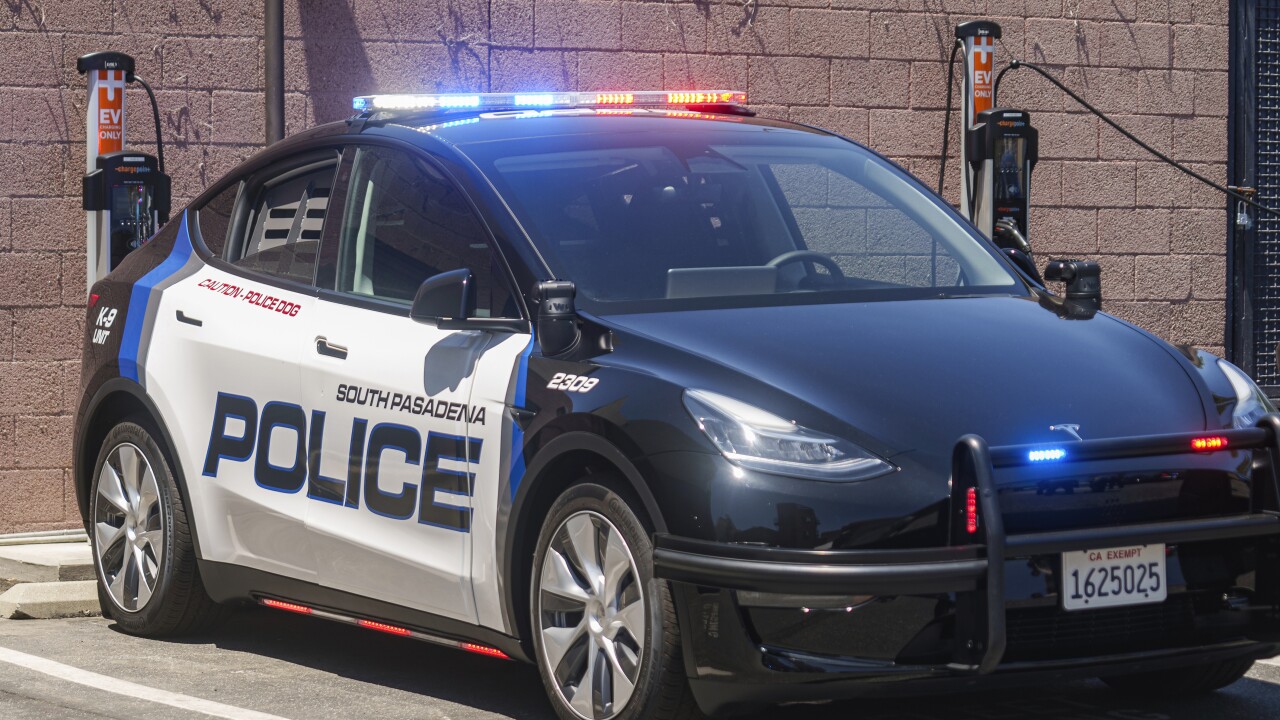A city in Southern California has become the first in the nation to replace its police patrol cars with electric vehicles, officials announced Monday, unveiling a fleet of 20 new Teslas.
South Pasadena on the edge of Los Angeles will replace its gas-guzzling police cruisers with the Teslas to help protect public health and fight climate change through reducing emissions. The Teslas will use new electric vehicle chargers installed at City Hall, officials said.
Police vehicles typically idle more than other vehicles when officers make traffic stops or respond to emergency calls, which greatly adds to emissions, said Michael Cacciotti, a city councilmember and regional air quality official.
“This is important, particularly in the Los Angeles area, which still has the most unhealthful air in the nation,” Cacciotti said. “We hope other police departments in the region and state will make the switch, too.”
Other cities have some electric vehicles in their fleets but this is the first to entirely go electric, officials said. The police department in nearby Anaheim introduced six Teslas to its patrol fleet through a pilot program earlier this year.
South Pasadena Police Sgt. Tony Abdalla said in an email they were tracking about 35 other agencies across the U.S. who were willing to share their experiences with incorporating one or more Teslas into their respective fleets.
The police department will have 10 Tesla Model Ys as patrol vehicles and 10 Tesla Model 3s for detective and administrative duties, both customized for police use. The city’s net cost is $1.85 million, with more than half the total cost covered by energy providers Southern California Edison, the Clean Power Alliance, and the Mobile Source Air Pollution Reduction Review Committee.
“We will have a 21st Century police force that is safe, clean and saves taxpayer dollars,” South Pasadena Mayor Evelyn Zneimer stated in a news release.
The switch to electric is expected to save South Pasadena about $4,000 annually per vehicle on energy costs, and generate savings on maintenance such as brakes, oil changes and air filters, the news release said. The overall operational cost per mile will be at least half of what it was previously with gas-powered vehicles, according to Police Chief Brian Solinsky.
The Los Angeles-Long Beach ranked no. 1 worst in the country for ozone pollution — also known as smog — and no. 6 for annual particle pollution, according to the American Lung Association. Carbon dioxide emissions also contribute to climate change, which is blamed in part for increasingly deadly wildfires in the region.
California’s Advanced Clean Fleets rule requires public agencies to ensure 50% of their vehicle purchases are zero-emissions beginning this year and 100% by 2027, but it exempts police cars and other emergency vehicles.


